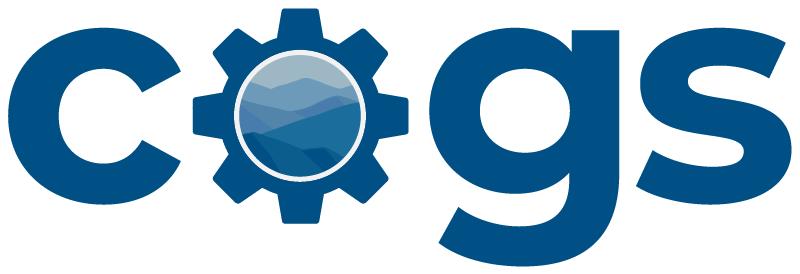How To Automate Customer Segmentation
Why Automated Customer Segmentation is Important
Automating the process of customer segmentation is important because it allows businesses to efficiently categorize their customers into different groups based on various characteristics such as demographics, behavior, interests, and purchase history. This is actually a necessity to good email marketing.
By automating this process, businesses can gain a clear understanding of their customer base, tailor their marketing efforts to specific segments, and personalize their messaging and offers accordingly. This not only improves customer engagement but also helps in optimizing marketing campaigns, increasing conversion rates, and ultimately driving more sales.
3 Bottlenecks You Can Avoid by Automating Segmentation
1. Time-consuming manual segmentation: manually segmenting customers can be a time-consuming and tedious task that can lead to errors and inconsistencies. By automating the process, businesses can save time and effort, allowing their marketing team to focus on other strategic initiatives.
2. Lack of data accuracy: manual customer segmentation can result in outdated or incomplete data, leading to inaccurate insights. Automation ensures data accuracy by constantly updating customer profiles and capturing real-time information.
3. Ineffective targeting: without automation, businesses may struggle to target the right customers with relevant messages and offers. Automating customer segmentation enables businesses to identify target segments more precisely and deliver personalized marketing campaigns, leading to higher conversion rates and ROI.
Software Tools for Automating Customer Segmentation
1. MailChimp - MailChimp is a popular email marketing automation platform that offers robust customer segmentation capabilities. It allows businesses to segment their audience based on various criteria and create targeted email campaigns. With pricing starting at $9.99/month, it is a cost-effective solution for small businesses.
2. HubSpot - HubSpot offers a marketing automation platform that includes customer segmentation features. Businesses can easily segment their audience and create customized workflows to engage leads and customers. HubSpot's pricing starts at $45/month, making it a mid-range option for businesses looking for more advanced automation capabilities.
3. ActiveCampaign - ActiveCampaign is an all-in-one marketing automation platform that offers robust customer segmentation features. It allows businesses to segment their audience based on a wide range of criteria and create personalized automation workflows. ActiveCampaign's pricing starts at $15/month, making it a cost-effective solution for small businesses.
4. Marketo Engage - Marketo Engage is a comprehensive marketing automation platform that supports advanced customer segmentation. It offers powerful tools for segmenting the audience based on various attributes and behaviors, enabling businesses to deliver personalized experiences. Marketo Engage's pricing varies based on the requirements and is suitable for mid-sized to enterprise-level businesses.
5. Salesforce Marketing Cloud - Salesforce Marketing Cloud is a robust marketing automation platform with advanced customer segmentation capabilities. It allows businesses to segment their audience using a wide range of criteria and delivers personalized messaging across multiple channels. Salesforce Marketing Cloud's pricing varies based on the specific needs and is suitable for larger businesses seeking comprehensive marketing automation solutions.
Using MailChimp for Automated Customer Segmentation:
MailChimp is a user-friendly email marketing automation platform with robust customer segmentation features. Here is an in-depth step-by-step process on how to use MailChimp for automating customer segmentation:
Sign Up for a Mailchimp Account:
If you don’t already have a Mailchimp account, sign up for one.
Choose the plan that suits your needs (there are free and paid plans). Disclaimer: with a free plan, you will be unable to follow along with the steps below.
Create Your Audience:
Once logged in, navigate to the ‘Audience’ section.
Create a new audience (if you haven’t already) and fill in the necessary details like audience name and default email address.
Import your existing contacts to Mailchimp, if you have any.
Set Up a Sign-Up Form:
Create a sign-up form for your website to capture new subscribers.
Customize the form to gather information relevant to your segmentation, such as age, location, interests, etc.
Go to the ‘Campaigns’ section and create a new email campaign.
Select ‘Automated’ and then choose ‘Welcome new subscribers’.
Customize the welcome email content and design.
This step helps engage subscribers from the moment they sign up.
Segment Your Audience with a Customer Journey
Set up a customer journey under “Automations”.
Use the information from your audience to create automations that automatically add contacts from . You can segment based on engagement, demographics, engagement, purchase history, etc.
For example, create a segment for subscribers who clicked on links in your previous emails. Add campaign engagement as the trigger, and use add a tag, add to group, or update information as actions.
Test the Customer Journey:
Before going live, test the customer journey to ensure everything works as expected.
Send test emails and review the flow of the journey.
Activate the Customer Journey:
Once everything is set up and tested, activate the customer journey.
Monitor the performance through Mailchimp’s analytics tools.
(Optional) Send a Campaign to a Segmented Audience:
Create a new email campaign.
Select ‘Send to a segment’ in the ‘To’ section of the campaign builder.
Choose the specific segment you want to target.
Customize your email content for this segment and send the campaign.
Analyze and Adjust:
Regularly check the performance of your emails and journeys.
Use Mailchimp’s analytics to understand what's working and what's not.
Adjust your segments, emails, and customer journey based on performance data.
Remember to regularly update and maintain your customer segmentation as your business evolves and your customer base grows. With MailChimp's user-friendly interface and powerful segmentation capabilities, you can efficiently automate and optimize your customer segmentation and messaging, leading to better engagement and results for your business.

